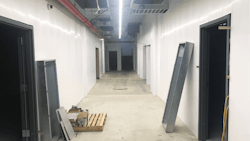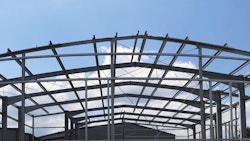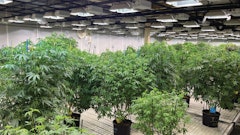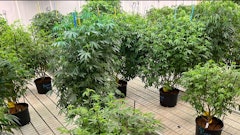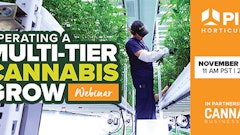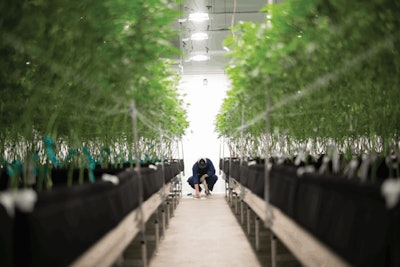
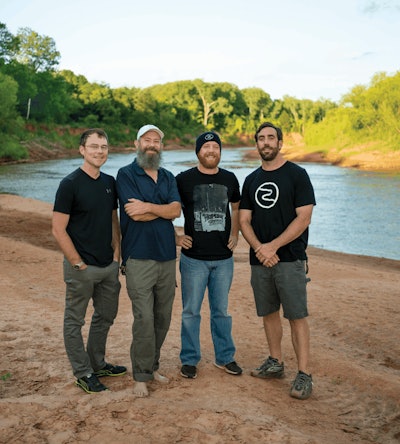
After Oklahoma voters approved State Question 788 to legalize medical cannabis in the summer of 2018, the industry boom was swift, and it hasn’t let up for a moment.
Reid Colley, CEO of Resonant Cultivation, recalls the night of the election: “All of us kind of held our breath. We really didn’t know how it was going to come out.” In the end, 57% of voters approved the measure. A resounding success and an auspicious beginning.
By the next morning, Colley was on a mission to build the founding team of Resonant Cultivation: Thomas Vaughn, Matt Venable and himself. The four men brought different experiences and complementary skill sets that supported Resonant’s stated mission of providing the highest quality medical cannabis to the patients of Oklahoma. They were excited. The way the ballot measure was written, and the way the state legislature would enact it, the state of Oklahoma was going to swing open the gates and loosen all barriers to entry. If you were an Oklahoma entrepreneur who wanted to try your hand at cannabis, you were as good as in. At that point, Resonant Cultivation was created and born in the small city of Pauls Valley, just south of Oklahoma City.
As of July 1, 2020, the Oklahoma Medical Marijuana Authority (OMMA) lists 5,970 active cultivation licenses, 1,407 processor licenses and 2,113 active dispensary licenses. By the time you read this, the state will have issued even more.
Halfway through this year, Oklahoma has been the second-biggest source of new licenses in the cannabis industry—beaten out only by the behemoth California. Together, both states accounted for a full 92% of all new U.S. cannabis business licenses this year through May.
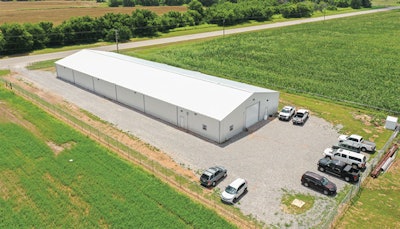
The supply side of this sprawling market supports the nascent demand of 313,638 patient licenses (again, as of July 1, and, again, a number that expands with each passing day). This is roughly 8% of the state population.
All that in less than two years.
“What followed has created an open platform: If you’ve got capital and you’ve got expertise and you’ve got some persistence and willpower, you can have a business here,” Colley says. “It’s been really interesting to see what’s going on right in front of us. I think the next five years will be very interesting to see what Oklahoma looks like.”
For now, Oklahoma looks like a vast landscape of new ideas and risk-taking small businesses. Resonant Cultivation is one of them, a small, 15-person team finding its home in a state-of-the-art facility replete with living soil beds and organic practices borrowed from legacy growers in Oregon. Matt Venable and Thomas Vaughn, the company’s lead cultivation team, grew up working with farmers in the Washita River Valley, the great stretch of fertile land surrounding Pauls Valley. They’ve learned fast what it takes to grow the sort of cannabis that will change how medical patients think of medicine.
But it’s not like they’re alone in this: The intent among those thousands of licensed growers in Oklahoma is surely something similar. Quality. Growth. Success.
“We wanted to come to this market with clean medicine,” Colley says. “We put a group of individuals as a team … together [to] try to build something to help Oklahomans.”
If the Oklahoma medical cannabis story mirrors the Land Rush of 1889 that kickstarted the state as we know it today—and if the state continues to greenlight new businesses like it has so far—then a fair question emerges: How will upstart companies distinguish themselves in this free-for-all marketplace? What’s it going to take?
“Some of the tips of the trade we learned from other industry folks were things like: Control your destiny,” Colley says. “If there’s one lesson that I’ve learned that reinforces itself, it’s ‘How do we control our destiny?’”
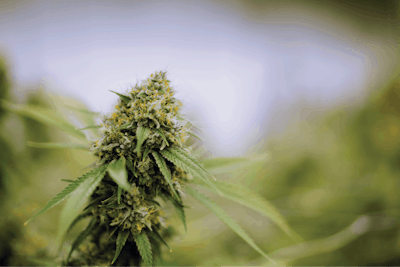
A Bank and a Building
The first thing the team figured it needed was a building. But even before that—before the questions of real estate leases and purchases—the business needed a checking account.
“It’s funny when you high-five your partners because you opened up a bank account,” Colley says. “How silly is that?”
All of the Resonant partners are seasoned business owners or professionals in their own right. Under normal circumstances, establishing a banking relationship is as simple as providing some documentation, signing some forms and making an initial deposit, of course. However, establishing a banking relationship for a medical cannabis enterprise requires much more due diligence, persistence to move along the process and transparency by both parties, something that new cannabis businesses across the country have learned is a sort of gauntlet.
To build a successful medical cannabis banking relationship, Resonant has always viewed the bank as an additional business partner. Colley says the key is to treat that relationship with respect and integrity.
Such is the nature of a new commercial landscape in a federally illegal industry. Nothing is simple. Nothing is taken for granted.
From the jump, the Resonant team started looking into leasing and retrofitting a warehouse closer to Oklahoma City. The idea was straightforward: Keep costs low and get this project moving. But, upon careful inspection, the long-term safety net was quick to fray: What if the building is sold to a less sympathetic landlord? What if a skittish owner gets scared off by an insurance company? The second-guessing piled up.
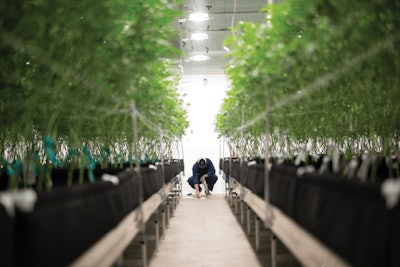
Colley says the right move for them was one that would take longer to execute, and this became something of a mantra for the business.
“Let’s do this the right way: left foot, right foot, brick by brick,” he says, with a warm Okie drawl, blending the many exciting metaphors of commercial enterprise. “It’s tough sometimes, if only because so much of cannabis can feel like a road race.” The Resonant team slept on it and decided that they wanted to own their land—a nice plot on the northern hemline of Pauls Valley—and wrangle their destiny back into their control.
With all eyes on this emerging industry, Colley and the team knew that cleanliness was going to be a priority. A new build would allow them to create their own protocols from the ground up. And now, sure enough, each day, Venable takes a sweep of the entire building and ensures that all sanitation standards are met—and exceeded.
After each harvest, the Resonant team morphs into a cleaning crew with no surface left untouched or unsanitized. Light fixtures, wall coverings, dehumidifiers, trellises, electric boxes, circulation fans, filters, sensors, ducting, tables (to name a few) are all sanitized and cleaned before the next crop is planted. Maintaining a clean environment is a top priority for the team—top to bottom.
This became the fundamental value system of the Resonant team: No shortcuts. No impulse buys. No rash decisions. This whole project would be a team effort built by careful deliberation of the end user: Ultimately, what can this business do to best serve the patients of Oklahoma? That question informs everything.
And when you’ve got one question guiding your day-to-day operations, things become simple. Not easy, maybe, but simple.
In a landscape dotted by nearly 6,000 cultivation license holders, that is one way to stay true to yourself and stand out from the pack, Colley points out. If cannabis is a land rush, as it often is, and if Oklahomans know land rushes, which they do, then the careful, judicious plan of a confident business team is already a point of distinction. It’s the story of the rabbit and the hare, reimagined for psychoactive horticulture.
Then, just when things looked as bright as can be for the new Resonant build, the rains blew in over the western horizon. “The weather around Oklahoma is pretty finicky,” Colley says. During those first few months of construction, in early 2019, rainfall created a series of delays. That was all right, though; the team decided that the long way was still the right way.
“It’s a simple design, but it’s highly functional,” Vaughn says of the facility. “We implemented rolling bench tables, which allows us to have more space for the canopy than if we would have just gone with stationary tables. One thing that we were given advice on as well was to have a great deal of veg space.”
And as the facility was coming together, the team turned from the building itself to the plant material that it would soon house.
Oregon Inspiration
Agriculture is a backbone of Oklahoma, and both Venable and Vaughn’s families have been involved in farming for decades, growing corn, soybean, alfalfa and wheat. They see the medical cannabis market as an opportunity to hone their skills and learn more about their own legacies.
But cannabis, as a crop, isn’t even the knee bone of Oklahoma, so the Resonant team trucked up to Oregon to gather intel.
Vaughn traveled to High Noon Cultivation, just south of Portland on good vineyard land, for about a month in 2019 to learn the company’s business model. There, the High Noon Cult crew, led by Tyson Lewis, showed off the perks of growing cannabis indoors using living soil beds. It was an attractive concept. High Noon had developed a plan that incorporated dry organic amendments and liquid organic supplements such as kelp to fulfill a cultivation style that produced rich, high-quality cannabis plants. Vaughn says the Resonant team looked around Oregon and other states but could not find anything finer in the marketplace. They were sold on High Noon Cult’s methodology.
“We looked to Oregon, a more mature market, and we’ve seen how prices have collapsed and who’s successful out there—and we’ve developed our model around that,” Colley says. High Noon had built an indoor facility that allows the company to manage costs more efficiently in a wobbly consumer market, something that Colley says the Resonant team wanted to keep in mind, long-term, as the Oklahoma landscape settles.
Back home in Pauls Valley, it was time to begin plotting the first harvest. The Resonant team was growing, and Venable and Vaughn were demonstrating what they’d learned up north. They had a blank slate, in a way, with cannabis being so new to most everyone in the state.
“A lot of people have absolutely no experience like that at all, because in Oklahoma obviously we didn’t have a cannabis market,” Vaughn says of the young, earnest cultivation team.
The work is not difficult, per se, but Colley points out that business owners must be precise and pay attention to details. Early training involved teaching employees how to thin plants properly or manage the transition from veg to flower. In Resonant’s flower rooms, for example, the soil beds are all the same size. So, it dawned on the team: Why not design a template for transitioning plants? Once you ensure uniformity through standard operating procedures (SOPs), each subsequent transition is simply a matter of following the process. No anomalies. No time wasted.
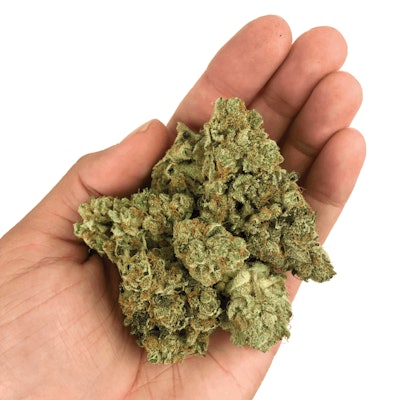
“One of the things that we continued to go back to, over and over and over, was ‘No shortcuts. Focus on quality,’” Colley says. “When we started looking at different growing techniques and methods, we feel like the living soil organics produces the best, cleanest, most effective medicine. And that drove every single decision for us, as far as the vision.”
Venable agrees: “What better way to emulate than what Mother Nature has done for millions, billions of years? She has perfected this. All we need to do is emulate that … as close as we can.”
But defending that natural process from pests and pathogens is also vital, so the team has implemented materials to protect their investment. For example, in the facility’s two large flower rooms, mold-resistant wall coverings line the length of the space.
Before every harvest, the Resonant team reamends their soil beds with dry amendments such as worm castings and bat guano to introduce nutrients back into the soil.
“These nutrients are feeding a microcosm beneath the soil,” Venable says. “The plants are the ones that bring this bacteria and fungus to come and feed. We’re feeding this ecology beneath the soil, so that they come and feed the plants.”
Vaughn is quick to underscore the point: “We’re growing soil, so the soil can grow the plants. We’re soil growers.”
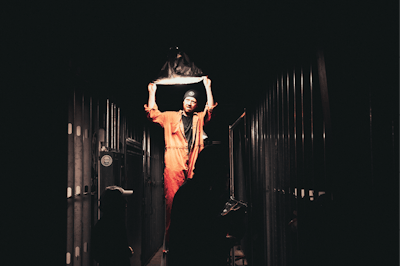
Resonant’s first harvest in mid-February was a great learning experience.
“Luckily, we have such a diverse team that brings so many attributes to cannabis from different industries, such as distribution and workflow optimization, agriculture, food and entertainment, technology, accounting and finance—it’s put us in a position where we were able to avoid some of the pitfalls,” Colley says. “We’ve surrounded ourselves with good people. With the first harvest, really, it went very well.”
With every harvest since then (the company’s fourth and fifth grow cycles were entering various stages of flower at press time in late July), the bottlenecks have cleared up. The team identified opportunities for improvement along the way.
And, so far, the patients have followed them on their journey.
Resonant’s first three harvests were pre-sold in full. Some caretakers and patients are now helping the team to closely identify certain terpene profiles in Resonant’s lineup that have been most helpful.
A Land of Opportunity
The deeply conservative state of Oklahoma typically is not thought of as a cannabis market. There was none of the illicit infrastructure to match the strength and know-how of California’s cannabis landscape, for example. And while Oklahoma regulators are now matching California’s licensing pace, the two states’ cannabis stories couldn’t be more different.
In Oklahoma, we’re seeing the very beginning of something truly new in an industry not exactly short on novelty.
Piyush Patel is quick to praise the hard-working team at Resonant Cultivation. He’s an investor who helped get Resonant going when the team was scouting warehouse space for lease. These days, he says his favorite part of working with the Resonant team is that he gets to walk around the facility and admire the plants, the products, the processes.
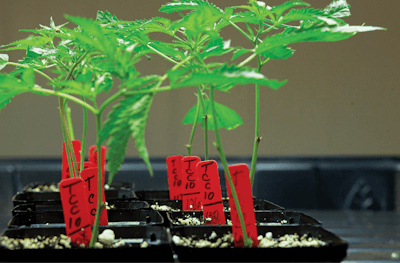
“These are some of the most intelligent and humble people you will ever meet,” Patel says with a smile. “It’s not about ‘How much money can we make on our first harvest?’ It’s ‘What kind of change can we make in the long term?’ Everything that these guys have built, they haven’t built it for now. They’ve built it for the future. They’re not thinking in terms of one or two harvests. These guys are really thinking, ‘How can we change this industry to make it better?’”
Resonant’s goal is to be a vertically integrated company, but, before that, the team is working closely with select retailers to help bridge an immediate gap: education.
Sales trends are still somewhat murky, but the Resonant team says that flower dominates. “It’s all about THC right now,” Vaughn says. “It’s a young market.”
Like other young markets, part of what makes Oklahoma such an interesting place to work is the opportunity to explain things like terpenes, cannabinoids and consumption methods to new patients. Through their marketing efforts and their budding relationships with retailers—including matching charitable donations based on flower sales at one dispensary customer, which supported the American Civil Liberties Union and a local nonprofit—the team is able to set the tone of what medical cannabis patients can come to expect from the plant. They can set a standard.
Even now, in a state afflicted by opioid addiction, Colley says that patients are eager to embrace a potential alternative for chronic pain and other ailments. He and the Resonant team make sure to distribute the company’s educational pamphlets to dispensaries alongside Resonant products.
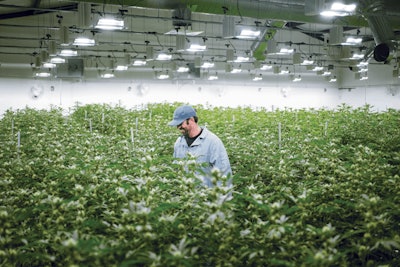
And already, Colley says he’s starting to hear questions from patients about terpene profiles.
To meet curiosity about and anticipated demand for CBD, Resonant is planning to develop some Type-II cannabis genetics. The idea is to bring a healthy dose of variety to a market that’s still getting its footing with the THC-rich plant.
The main task is to create a consistent experience for patients, whatever they’re looking for. That’s what Colley and his teammates are talking about when they reiterate that each decision dovetails back to the end user.
In this way, Resonant continues to do what it can to control its destiny—as much as it can.
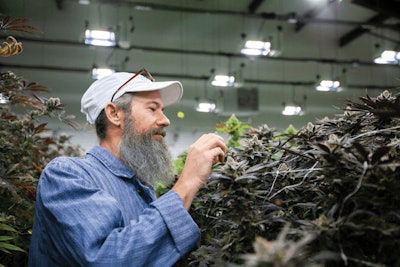
“My worry is as opportunities present themselves, that the market changes with more out-of-state [investors] that are viewing more of the bottom line and not the top line,” Colley says. “For us, that’s where it is: How do we give back to the community? How do we educate our patients? How do we work with the industry to make it the best it can be?”
This idea is something that’s baked into the very blood and sweat of Oklahomans. In the wake of the April 19, 1995, federal building bombing in downtown Oklahoma City, out-of-town responders and journalists noticed a powerful wave of community support. They called it “the Oklahoma Standard.” According to the eponymous organization that spun off from this charitable wave: “Despite this unspeakable tragedy, among the most lasting memories are the tenderness of the response. The people of Oklahoma banded together in a community-wide display of spontaneous altruism. Trucks became ambulances. Strangers became neighbors. People donated the shoes off their feet. That spirit of generosity—of giving until there’s no more to give—has been part of the DNA of the state ever since it was founded.”
The years went on and opportunities to exercise the Standard came again and again. In the decades since the bombing, Oklahoma’s erratic weather patterns brought a series of tornadoes that dramatically altered the greater Oklahoma City landscape—particularly during the nasty 2013 season. Once again, residents emerged from their own shaky lives and helped their neighbors.
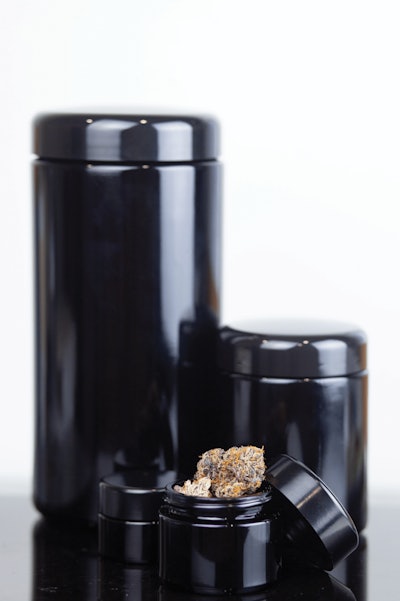
“These are people we don’t know, but we want to help them,” Colley says. He sees the Oklahoma Standard gelling once again in the early years of the medical cannabis industry.
This is an unprecedented weather pattern in its own right, if only metaphorically. The state’s economy is bolstered largely by the oil and gas industry, and now here comes this boom that promises riches of another stripe. The entrepreneurs that make up the OMMA’s ballooning license counts are comparing notes, Colley says, learning from one another and generally trying to create a business landscape where everyone can flourish. Whether that happens is something that remains to be seen.
“This is a blossoming industry,” he says. “I think that’s the exciting thing, is there’s competition but there’s enough for everybody. So, let’s do it the right way and do it right the first time.”









